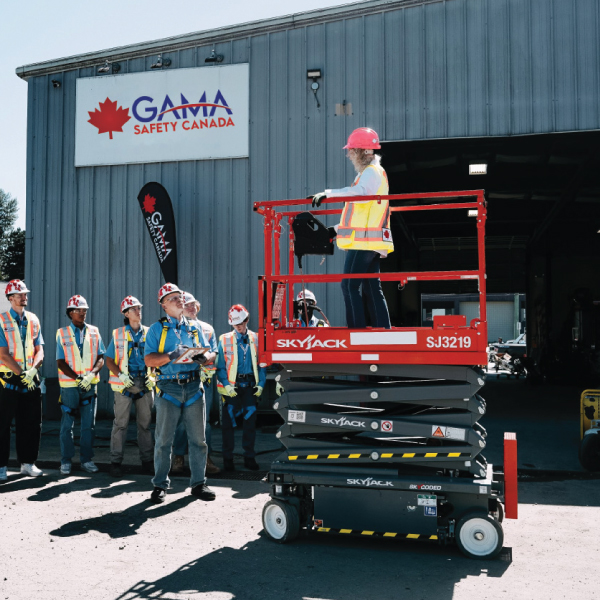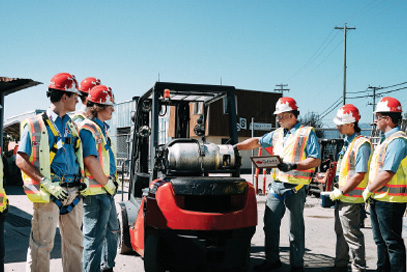Safe and Efficient
Use of Scissor Lifts for Elevated Workspaces.
Scissor Lift, are designed to provide vertical access to elevated areas, offering both stability and versatility. Proper training is required to safely operate these lifts, which includes ensuring the platform is level, understanding the weight limit, and following all safety measures to prevent falls and equipment malfunctions.
Safe and Efficient
Use of Scissor Lifts for Elevated Workspaces.
Scissor Lift, are designed to provide vertical access to elevated areas, offering both stability and versatility. Proper training is required to safely operate these lifts, which includes ensuring the platform is level, understanding the weight limit, and following all safety measures to prevent falls and equipment malfunctions.
OUR PARTNERS AROUND THE WORLD
OUR PARTNERS AROUND THE WORLD
OUR PARTNERS AROUND THE WORLD
OUR PARTNERS AROUND THE WORLD
OUR PARTNERS AROUND THE WORLD
OUR PARTNERS AROUND THE WORLD
OUR PARTNERS AROUND THE WORLD
OUR PARTNERS AROUND THE WORLD
OUR PARTNERS AROUND THE WORLD
OUR PARTNERS AROUND THE WORLD
OUR PARTNERS AROUND THE WORLD
OUR PARTNERS AROUND THE WORLD
OUR PARTNERS AROUND THE WORLD
OUR PARTNERS AROUND THE WORLD
Scissor Lift
Essentials
Understand how to operate a scissor lift safely, perform pre-use inspections, and navigate around jobsite obstacles.
Elevating
With Safety
Learn safe elevation practices, emergency lowering procedures, and fall prevention strategies for aerial scissor lifts.
Scissor Lift Safety Resources
Federal regulations covering the safe operation of scissor lifts in Canada.
Guidance on safe operation, hazards, and precautions for scissor lifts.
CSA certification and standards for the safe design and use of scissor lifts.
Detailed guidance on safe operation and hazard prevention for scissor lifts.
Case study of a scissor lift incident highlighting hazards and prevention strategies.
Video demonstration on safe operation and hazard awareness for scissor lifts.
Scissor Lift Essentials:
Staying Safe While Operating Elevated Work Platforms
Operating a Scissor Lift requires precision, awareness, and full adherence to safety procedures. This essential training equips workers with the knowledge to safely use elevated work platforms in construction, maintenance, and industrial environments. Learn how to identify hazards, operate the lift correctly, perform daily inspections, and comply with Canadian safety standards. With proper training, workers can minimize risks and ensure secure, efficient job performance at height.

SCISSOR LIFT
Scissor Lift Essentials:
Safe Operation of Aerial Work Platforms
Operating a Scissor Lift involves more than simply raising and lowering the platform it requires a clear understanding of safety procedures, environmental conditions, and equipment limitations. These aerial work platforms are commonly used in construction, maintenance, and warehouse settings to access elevated work areas. However, misuse can result in serious incidents, including tip-overs, collisions, and falls from height. Proper training is essential to ensure that every task is completed with full awareness of potential hazards.
This training focuses on the safe operation of Scissor Lifts, covering everything from pre-use inspections and equipment controls to emergency procedures and fall protection requirements. Participants will learn how to assess ground conditions, maintain platform stability, and operate the lift in accordance with manufacturer guidelines and Canadian safety regulations. The course also emphasizes the importance of personal protective equipment (PPE), working within load limits, and using guardrails or harnesses where required.
SCISSOR LIFT Definition
A Scissor Lift is a type of mobile elevated work platform (MEWP) designed to safely lift workers and equipment to vertical heights. It operates using a crisscrossing (scissor-like) mechanism that extends upward, enabling the platform to rise smoothly and steadily. This design allows vertical elevation without lateral movement, making it ideal for tasks that require precision at height.
Scissor Lifts are commonly used in construction, maintenance, warehousing, and industrial settings. Their ability to lift both personnel and heavy tools or materials makes them a practical choice for overhead work, including electrical installations, HVAC maintenance, drywall, and painting. They come in both electric models for indoor use and diesel-powered models for outdoor terrain.
Due to their platform stability and weight capacity, Scissor Lifts are considered one of the safest options for vertical elevation tasks when operated correctly. However, they must always be used on firm, level surfaces and in accordance with manufacturer guidelines and workplace safety standards to prevent tipping or collapse.
A Scissor Lift operates through a system of hydraulic, pneumatic, or mechanical actuators that power the scissor arms. When activated, these actuators extend the arms outward, causing the platform to rise vertically. Lowering the lift works in the opposite direction, retracting the arms and bringing the platform down slowly and safely.
Most modern Scissor Lifts are equipped with user-friendly control panels that allow for precise vertical positioning. Operators can adjust the height from either the platform or the base, depending on the model. Safety features such as emergency stop buttons, guardrails, tilt sensors, and overload protection are commonly integrated into the design.
Understanding the basic mechanics of a Scissor Lift is essential for safe operation. While the movement is limited to straight-up and straight-down motion, the reliability of the mechanism depends on regular inspections, proper maintenance, and awareness of the lift’s weight limits and environment.
Scissor Lifts are widely used in a variety of industries that require safe, stable vertical access. Common tasks include electrical work, ceiling installations, overhead lighting adjustments, building maintenance, painting, and material handling in warehouses. Their spacious platforms also make them suitable for transporting tools and materials to elevated locations.
In the construction sector, Scissor Lifts are frequently utilized for indoor and outdoor tasks where ladders or scaffolding would be impractical or unsafe. Their mobility and ease of use allow workers to complete tasks more efficiently, especially in high-traffic or time-sensitive job sites.
Scissor Lifts are also favored in facility management and industrial operations where ongoing maintenance is needed at height. Their ability to be quickly deployed, repositioned, and operated with minimal setup time increases productivity while reducing risk when used with proper training and supervision.
The main distinction of a Scissor Lift lies in its vertical-only lifting motion and scissor-style mechanism. Unlike boom lifts or aerial work platforms that offer horizontal reach and rotation, Scissor Lifts are designed specifically for vertical access and tend to have larger platforms with higher weight capacities.
This unique design gives Scissor Lifts exceptional stability and allows multiple workers or heavy equipment to be lifted simultaneously. The platform’s rectangular shape provides ample space for tools, materials, and personnel to work safely side by side, which is ideal for installation or repair tasks across large ceiling areas.
While they lack the flexibility of articulated lifts, Scissor Lifts excel in settings where reach is straightforward, the floor is level, and space is limited. They offer a simpler, more robust solution for vertical elevation and are generally easier to operate and maintain compared to more complex lift systems.
A typical Scissor Lift consists of several core components: the base frame, scissor arms, platform, hydraulic or electric power system, and control panels. Each part plays a critical role in ensuring the lift’s functionality, safety, and structural integrity during operation.
The scissor arms are the central feature, expanding and contracting to raise or lower the platform. The base frame provides support and houses the power source, which may be battery-powered for indoor models or engine-driven for outdoor models. The platform is the working surface, usually guarded with rails and equipped with access gates for safe entry and exit.
Other essential components include safety sensors, emergency stop systems, and overload protection devices. Regular inspection and understanding of each component are vital to preventing malfunction and ensuring that the Scissor Lift operates within its safe working parameters.
Proper training is essential for the safe and effective operation of a Scissor Lift. Operators must understand how the machine functions, how to assess worksite conditions, and how to respond to emergencies such as power loss, tipping risk, or mechanical failure.
Training covers a wide range of critical areas including pre-operation inspections, fall protection, load limits, movement controls, and emergency procedures. Workers are also taught how to navigate uneven terrain, avoid overhead obstructions, and communicate effectively with ground personnel.
By receiving certified training and practicing correct operation techniques, workers can significantly reduce the risk of accidents, equipment damage, and costly downtime. In many regions, including Canada, Scissor Lift operators are required by law to be properly trained and certified before using this type of elevated platform in the workplace.
SCISSOR LIFT Legislation
Yes, Scissor Lifts are regulated in Canada under multiple federal and provincial occupational health and safety (OHS) regulations. These machines fall under the broader category of Mobile Elevating Work Platforms (MEWPs), which are governed by strict rules regarding design, use, inspection, and training.
The Canadian Centre for Occupational Health and Safety (CCOHS) and each provincial safety authority such as WorkSafeBC or the Ontario Ministry of Labour set out standards that employers and workers must follow. These include CSA Standard B354 for elevating work platforms, which outlines requirements for equipment design, testing, operation, and maintenance.
Employers have a legal duty to ensure that all Scissor Lift operators are trained and certified according to the applicable legislation in their province. Failure to follow these guidelines can lead to citations, work stoppages, or severe legal consequences in the case of an incident.
Canadian legislation mandates that all Scissor Lift operators must be trained in both theory and practical components before using the equipment. Training must align with CSA B354 standards and include instruction on hazard identification, fall protection, platform control systems, emergency procedures, and safe operation.
This requirement is enforced under OHS regulations in every province. For instance, in British Columbia, WorkSafeBC OHS Regulation Part 13 addresses elevated work platforms and requires that operators be "adequately trained and qualified" to safely perform their duties using such equipment. Similar laws are in place in Ontario, Alberta, and all other jurisdictions.
Employers must document all training and retain records to demonstrate compliance. Training must be updated if there are changes to the equipment, workplace, or if an operator is observed using the lift unsafely. Refresher training is also recommended every few years to maintain safety awareness.
Yes, routine inspection of Scissor Lifts is a legal requirement in Canada. Inspections must occur daily before use and must follow the manufacturer's maintenance schedule, in addition to annual inspections by qualified personnel. These regulations are outlined in both provincial legislation and CSA standards.
According to CSA B354.6, operators are required to perform pre-operation inspections to check for mechanical defects, proper fluid levels, tire condition, safety devices, and control functions. Any issues must be reported and addressed before the machine can be used. Equipment in disrepair must be tagged out of service immediately.
Annual inspections must be completed by a certified technician and documented thoroughly. The failure to perform or log these inspections can lead to regulatory fines, insurance issues, or increased liability in the event of a workplace incident involving a Scissor Lift.
Canadian safety regulations require that Scissor Lift operators use fall protection measures in compliance with local OHS laws. Although the platform is surrounded by guardrails, workers may still be required to wear a fall arrest system depending on the task and elevation.
According to WorkSafeBC OHS Regulation 11.2 and Ontario Regulation 213/91, fall protection is mandatory when workers are at risk of falling 3 metres (approximately 10 feet) or more. Even with integrated guardrails, tasks involving leaning outside the platform or working in high-risk environments may trigger additional protective requirements.
Employers must provide appropriate fall protection equipment, such as harnesses and lanyards, and ensure workers are trained to use them properly. Non-compliance with these fall protection rules when operating Scissor Lifts can lead to severe penalties, worksite shutdowns, or injury liability claims.
To remain compliant with Scissor Lift regulations in Canada, employers must maintain extensive documentation related to operator training, equipment inspections, maintenance records, and incident reports. These documents prove due diligence and are essential in the case of audits or investigations.
Training records must include the name of the trainee, date of completion, topics covered, trainer credentials, and any practical assessment results. Inspection checklists should be completed daily and filed by supervisors or safety coordinators, with clear notation of any repairs or defects identified.
Failure to provide documentation can be considered a violation of OHS regulations, even if safety practices are followed. Documentation is not only a legal requirement but also a critical part of a company's internal risk management strategy when working with Scissor Lifts and other MEWPs.
Failure to comply with Scissor Lift regulations can result in serious legal, financial, and human consequences. Regulatory bodies such as WorkSafeBC, Ontario’s Ministry of Labour, or Alberta OHS may issue fines, stop-work orders, or initiate prosecutions against employers or supervisors.
Beyond legal penalties, non-compliance puts workers at significant risk of injury or death. Incidents involving falls, equipment failure, or improper operation can lead to long-term disability or fatality—resulting in lawsuits, increased insurance premiums, and reputational damage to the employer.
To avoid these outcomes, companies must proactively train staff, enforce safety policies, conduct frequent audits, and stay up to date with changes in Scissor Lift legislation. Safe practices not only meet legal requirements but also contribute to a productive and secure work environment.
Other Courses You May Be Interested In.
Workers who complete SCISSOR LIFT training often continue their safety education with the following programs:"
More Courses
Online Courses
"Explore & Book Online Courses!
Have a Question?
"We’re here to help! Click the button to get in touch."


